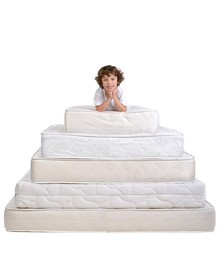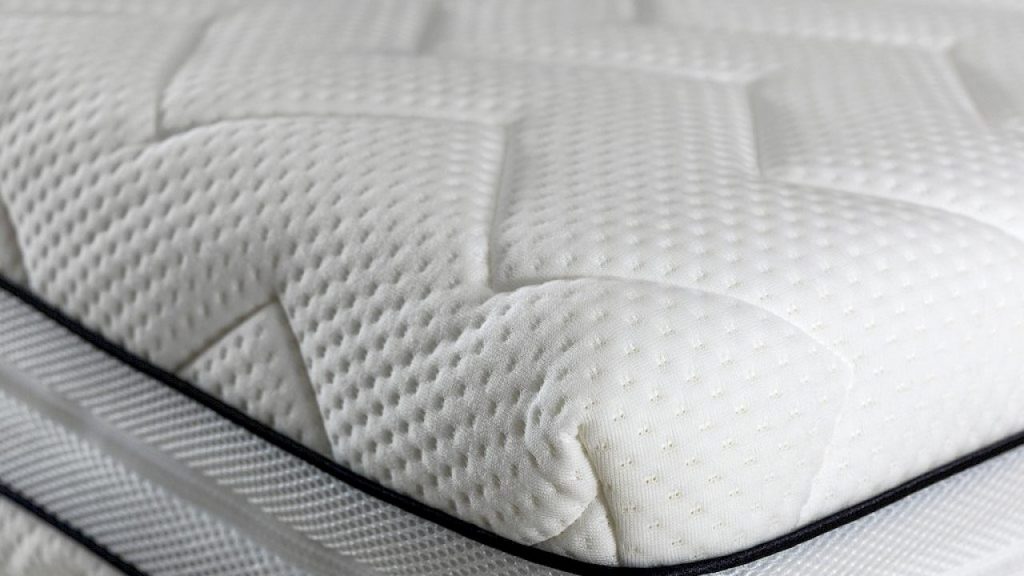Buying a new mattress can be like navigating health insurance. Jumping online and comparing different features and benefits, that to the industry outsider can appear to be crucial. These days with so many companies vying for your mattress business with marketing terms like Inner Spring, Pocket Spring, No Spring, Latex, Memory Foam, Euro-Top & Pillow Top. Then there are the countless trademarked foams many mattress retailers both online and storefront, market as the defining difference. The combinations are confusing and endless.
Sorting through the deafening noise of all the marketing clutter in the mattress industry and focusing on what matters to you, a GREAT NIGHT SLEEP, will help you make a well-informed choice. Be sure to arm yourself with the information needed, and avoid the pitfalls of relying on mattress myths, when making that all-important sleep investment.
To help unclutter the information you have already heard, read or just know, here is a list of common mattress myths that will help when dealing with mattress salespeople.

Myth 1 – You must replace your mattress every 8 years
The Better Sleep Council, an unbiased consumer-education arm of the International Sleep Products Association, recommends replacing your mattress every 7-10 years. This varies greatly when factors like comfort and support are taken into consideration, as the truth of the matter is that the life of a mattress, just like most things, varies wildly. For respiration and microbial health reasons, we wouldn’t recommend leaving it for longer than 10 years. Whereas if you find that your young mattress (less than 5 years old) is causing pain, discomfort, or interrupting healthy sleep, then without question it is time to upgrade before any long-term issues are able to develop.
Myth 2 – A firm mattress is the best mattress for back pain sufferers
We aren’t sure where this myth was started, but it’s a doozy! The idea that anything except a rock-hard mattress is ideal for back pain sufferers, is comical. So if you are a part of the 3.7 Million Australians that suffer from back pain, you will want to know what to look for in a mattress to help alleviate that pain.
What countless scientific studies have shown is to minimize pain and discomfort, help your body relax and muscles disengage and assist with healing restorative sleep, your body needs a mattress that conforms to your body, offering not just comfort, but night-long support. For any type of pain sufferers, comfort will help you fall asleep, however, support is what assists you in staying asleep and waking up pain-free and refreshed.

Myth 3 – No mattress will assist in reducing your tossing & turning
According to sleep studies, the average Australian moves around in bed up to 75 times every night – whether it’s a simple reshuffle or a complete roll. We move during the night to alleviate pains and strains usually caused by pressure points stressing on our backs and joints. Common sense dictates that a good mattress will reduce how much you move at night by providing pressure point relief, which will allow you to fall into a deeper, more restorative healing sleep.
Myth 4 – A mattress should be flipped every few months to keep it in good condition.
Most mattresses today are made one-sided, which means they should never be flipped. What you can do is rotate your mattress (head to foot) every few months to ensure the entire sleeping surface is compressed evenly. After the first six months, flipping a good quality mattress a few times a year is more than sufficient. Any more and it indicates that the quality of the materials used aren’t as good as they should be.

Myth 5 – Buy a mattress with the longest warranty possible
Although clever marketing teams would have you believe otherwise, mattress warranties DO NOT refer to the life expectancy of your purchase. Most mattress warranties cover workmanship and materials, while an alarming amount of warranties only cover a reducing proportion of such defects over time.
When buying a new mattress, ensure you read the warranty carefully as there are quite significant differences in the terms and conditions of warranties from manufacturer to manufacturer. You must spend a lot to get good quality
Myth 6 – You must spend a lot to get good quality mattress
Just like when Uber hit the market here in Australia, we quickly learned that although it was an industry norm to pay a Taxi $X to get from point A to point B, there were cheaper and more convenient methods available. When the ‘Mattress in a Box’ industry hit, Australian’s soon discovered that you no longer had to invest $5,000-$8,000 to get a premium quality mattress that offered all the comfort and support required to create ideal sleeping conditions.
What’s the cost of a good night’s sleep? If you invest $1,200 on a new Sophie mattress (for example) and slept comfortably on your Sophie mattress for only 7 years, the cost of healthy sleep would be 47c per night – much less than the cost of a Starbucks coffee once a week after a terrible night sleep…
If you’re ready for a new mattress, we’d love to help. Click here to learn more: Best Adjustable Bed Mattress

